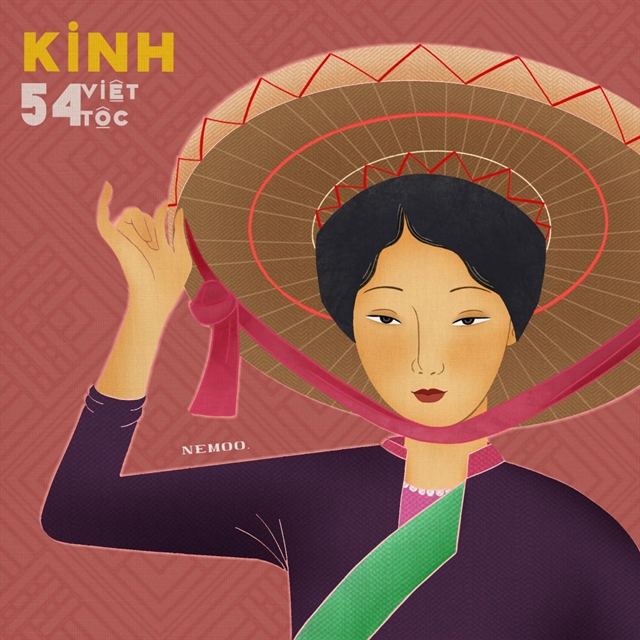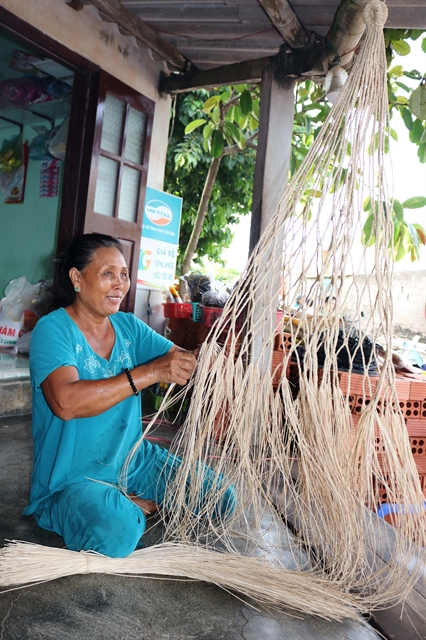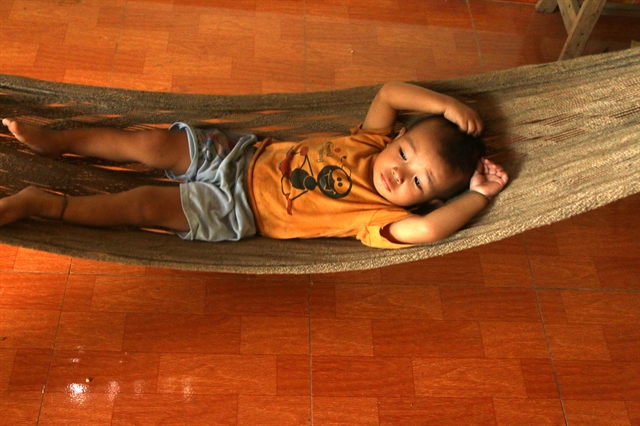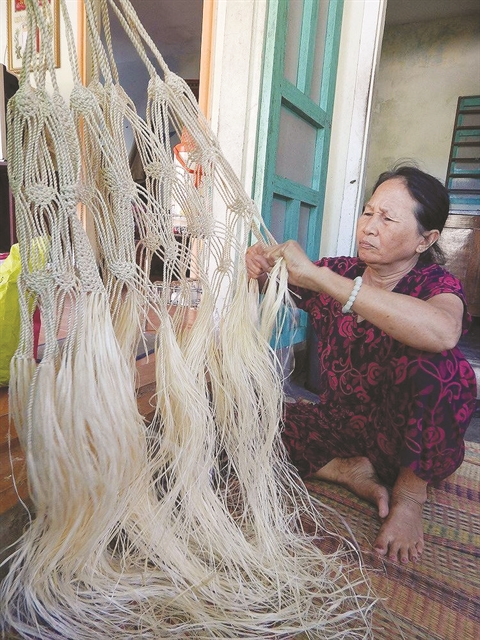 Features
Features

Once-famous handmade hammocks from Phú Quý Island are beginning to regain their popularity, giving a lifeline to local craftspeople

|
| Huỳnh Thị Nhơn helps preserve the traditional hammock-weaving craft of Phú Quý Island in Bình Thuận Province. VNS Photo Ngọc Diệp |
by Ngọc Diệp
Sitting in front of her small grocery, Huỳnh Thị Nhơn, 56, carefully splits dried stilt roots of Pandanus trees into fibres to make hammocks that help her earn extra income.
Nhơn is one of the few people in Long Hải Commune on Bình Thuận Province's Phú Quý Island who are keeping the craft alive.
She began making hammocks in the central coastal province when she was 15 years old.
In past years, most local women living on the island were hammock weavers, but now many of them have better-paid jobs.
“The island’s hammocks were very famous. Traders in wholesale markets across the country often came here to order our craft products,” Nhơn recalled.
At noon and in the evening, islanders, mostly women, were busy with orders and worked without electricity, using oil lamps at night.
“That was a really fun time,” Nhơn said.
If stored in advantageous conditions, the hammocks can be used for five to 10 years.
Today, only a few islanders weave hammocks, usually for their family’s use or for gifts for relatives and friends.
Many people now prefer industrially-made hammocks made from synthetic fibres that can be bought for cheap prices.

|
| The stilt roots of Pandanus trees are used to make hammocks. VNS Photo Ngọc Diệp |
Handicraft skills

|
| Weaving hammocks requires skill and patience. VNS Photo Hải Vương |
“The weaving process is not easy and requires patience, so it may not attract the young people,” Nhơn said.
To make the hammocks, the only material needed is the stilt root of the Pandanus tree, which grows wild throughout the island.
People cut the stilt roots from the trees, peel the bark, split it into thin sheets, and then set them out in the sun for a day.
To makes splitting the sheets easier, the fibres are not fully dried, Nhơn said.
“If the fibres are too dry, people can put them into seawater to soften them.”
One of the important steps is the rolling technique over the calf of the leg. “This technique will create some pain on your calf, but only for the first few days.”
Showing how it's done, Nhơn pinches and holds about seven to 10 thin fibres, and then uses the full length of her right hand to roll the fibres along her right calf.
The fibres twist together into a cord.
She repeats these stages until she has enough cords for a hammock.
It takes about seven to 10 days to complete an item.
A hammock is usually 2-2.5 metres long, and has natural colours that are milky or brownish.

|
| ISLAND LIVING: A young boy swinging in a hammock. VNS Photo Hải Vương |
Tourist attraction
To revive the local craft of hammock-making, local authorities have decided to feature the craft as a tourist attraction.
Đỗ Kim Phụng, an official at the culture department at Long Hải Commune’s People’s Committee, said that measures were being taken to preserve the weaving techniques for following generations.
While waiting for preferential policies from the government, locals are also actively seeking a market for their products, Phụng said.
In recent years, the number of new orders has increased thanks to the strong development of eco-tourism, and the trend toward a more sustainable society with environmentally friendly products.
Phú Quý welcomes thousands of visitors every year and has seen an increase in tourists because of its pristine natural beauty.
“More people know about the island’s traditional crafts and they like our craft products,” Nhơn said.
Her son has been promoting and marketing locally made products through social networks like Facebook.
Since the beginning of the year, Nhơn has sold about 10 hammocks to customers and tourists who placed orders.
The price ranges from VNĐ700,000 (US$30) to VNĐ1 million ($43) each, depending on their size.
“With changes in market trends, our traditional craft can be revived,” Nhơn said.

|
| Hammocks feature the art work of the people living on Phú Quý Island. VNS Photo Hải Vương |
However, she is still worried that young people will not be interested in the craft and will move to the mainland for better job opportunities.
I hope the island’s cultural values can be preserved, and that hammock-weaving can become one of our tourist attractions soon. VNS




.jpg)